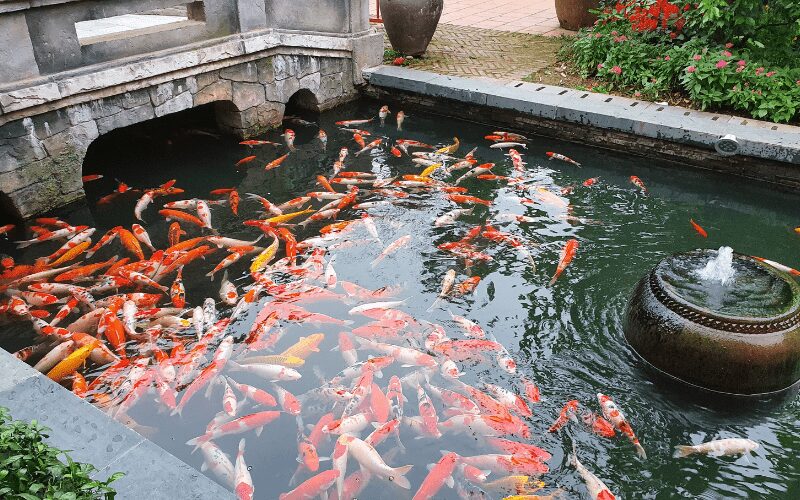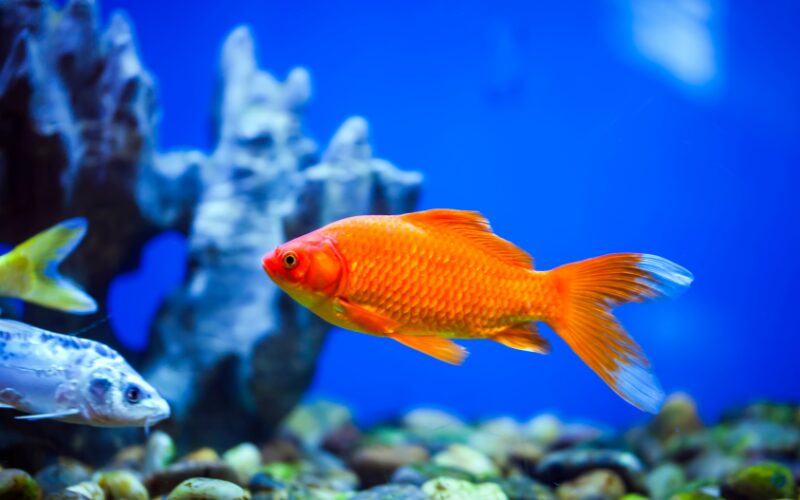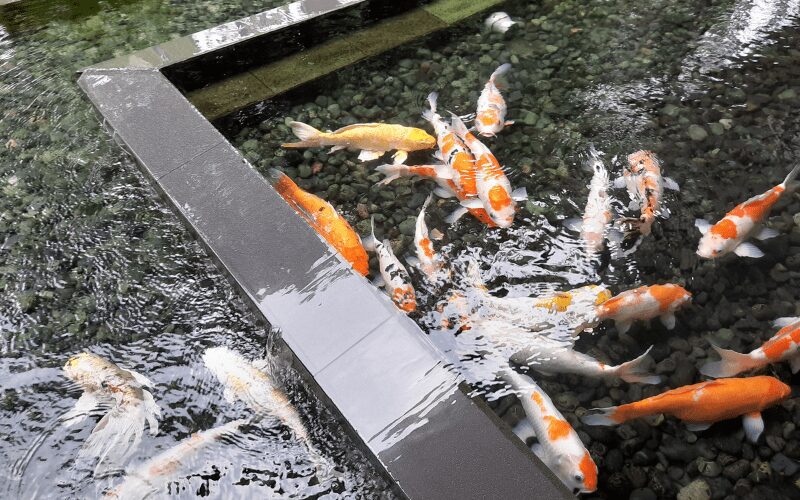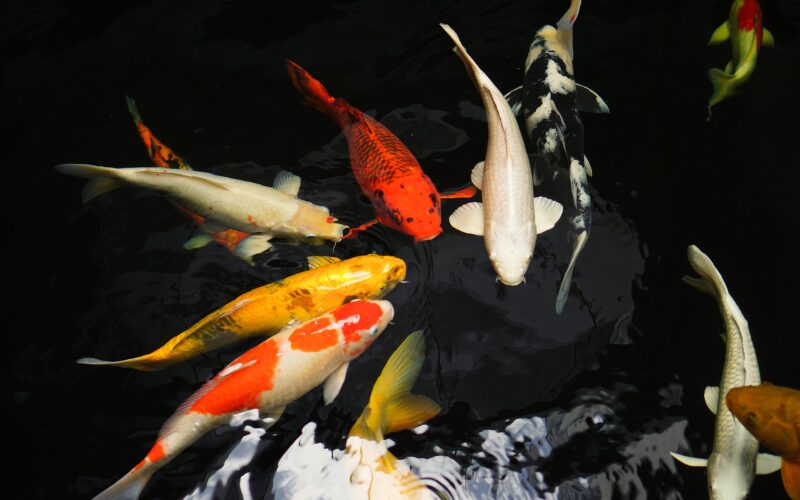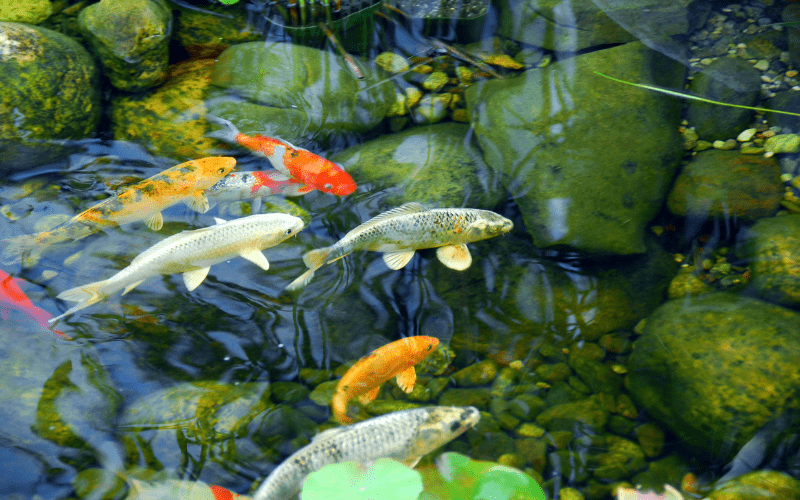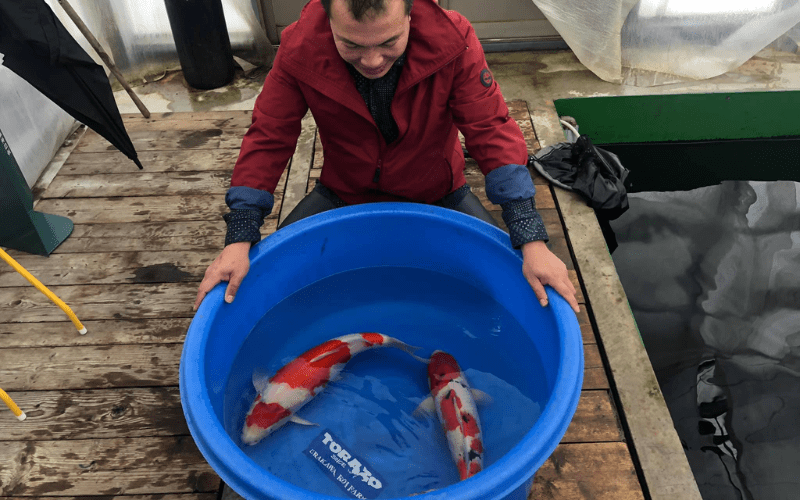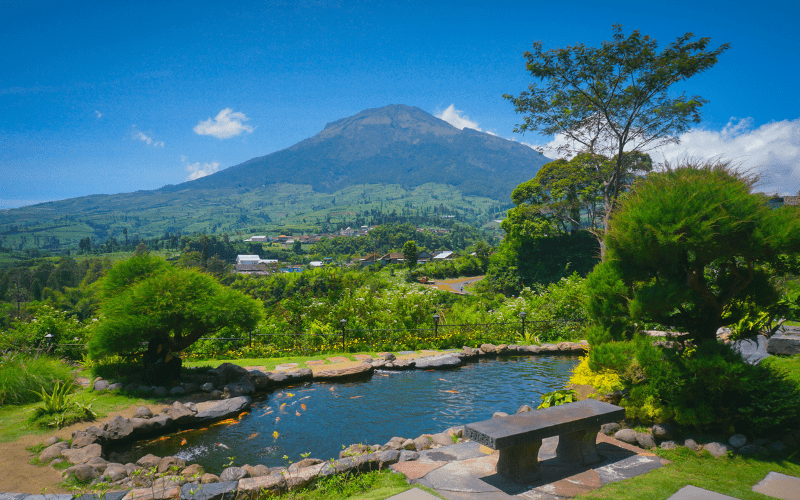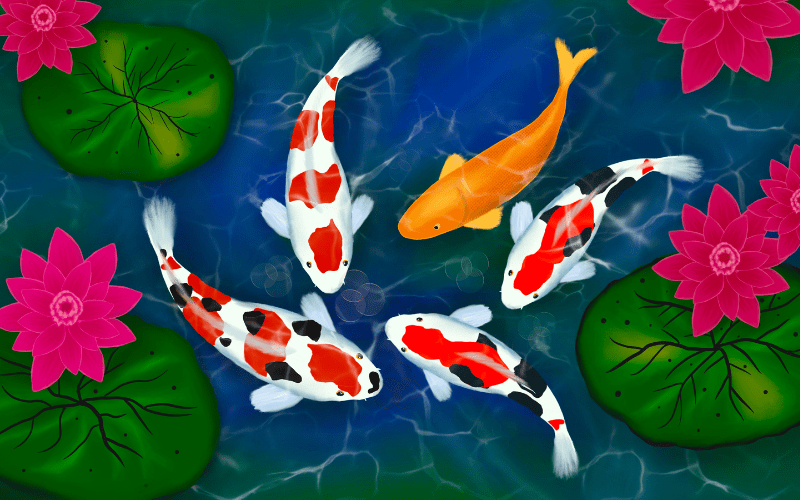UV (ultraviolet) light is a powerful tool in the management of koi ponds. While it has many benefits, particularly in controlling algae and pathogens, there can be concerns about the potential for too much UV light. In this blog post, we’ll explore the role of UV light in koi ponds, the potential issues of excessive UV exposure, and how to find the right balance to maintain a healthy pond environment.
Understanding UV Light in Koi Ponds
What is UV Light?
UV light is a type of electromagnetic radiation with wavelengths shorter than visible light but longer than X-rays. In the context of koi ponds, UV light is commonly used through UV sterilizers. These devices pass pond water through a chamber exposed to UV light, which kills or inactivates microorganisms, including algae, bacteria, and parasites.
How UV Light Works in Ponds
UV sterilizers work by exposing water to UV-C light, which has germicidal properties. As water flows through the sterilizer, the UV light disrupts the DNA of microorganisms, preventing them from reproducing and causing harm. This process is highly effective at reducing free-floating algae and harmful pathogens, contributing to clearer water and healthier fish.
Benefits of UV Light for Koi Ponds
Algae Control
One of the primary benefits of UV light is its ability to control algae. Free-floating algae can turn pond water green and reduce visibility. UV sterilizers target these algae, improving water clarity and reducing the need for chemical treatments.
Pathogen Reduction
UV light also helps reduce the presence of harmful pathogens in the pond water. This includes bacteria, viruses, and parasites that can cause diseases in koi. By lowering the pathogen load, UV sterilizers contribute to the overall health and well-being of the fish.
Potential Issues with Excessive UV Light
Impact on Pond Ecosystem
While UV light is beneficial, excessive exposure can disrupt the pond’s ecosystem. UV sterilizers not only target harmful microorganisms but can also affect beneficial bacteria that are crucial for the biological filtration of the pond. These beneficial bacteria break down waste products and help maintain water quality.
Health Effects on Koi Fish
Koi fish can be sensitive to their environment, and too much UV light can lead to health issues. Overexposure to UV light can cause stress and physical damage to the fish. Symptoms of UV overexposure include lethargy, loss of appetite, and changes in coloration. In severe cases, it can lead to more serious health problems and even mortality.
Optimal UV Light Levels
Recommended UV Light Intensity and Duration
Finding the right balance of UV light is essential. The optimal UV light intensity and duration depend on several factors, including the size of the pond, water clarity, and the number of fish. Generally, UV sterilizers are rated by the wattage of the UV bulb and the flow rate of water through the unit. Manufacturers provide guidelines on the appropriate sizing and operation time for different pond conditions.
Factors Influencing UV Light Requirements
Pond Size
Larger ponds require more powerful UV sterilizers to ensure adequate exposure to all the water. The flow rate of the pump and the turnover rate of the pond water are critical factors in determining the effectiveness of the UV light.
Water Clarity
Clearer water allows UV light to penetrate more effectively. If the water is turbid or murky, the UV light may be less efficient, necessitating longer exposure times or higher wattage bulbs.
Fish Density
Higher fish density increases the biological load on the pond, potentially requiring more UV light to maintain water quality. However, care must be taken to avoid overexposure.
Balancing UV Light in Your Koi Pond
Monitoring and Adjusting UV Light Levels
Regular monitoring of pond conditions is crucial to maintaining the right balance of UV light. Testing water parameters, observing fish behavior, and assessing water clarity can help determine if adjustments are needed. UV sterilizers should be inspected regularly to ensure they are functioning correctly, and UV bulbs should be replaced according to the manufacturer’s recommendations.
Signs of Too Much UV Light
Indicators of excessive UV light exposure include a decline in water quality despite the use of a UV sterilizer, stress or unusual behavior in koi fish, and a reduction in the population of beneficial bacteria. If these signs are observed, it may be necessary to reduce the UV exposure by adjusting the sterilizer settings or operating it for shorter periods.
Alternative Methods for Maintaining Pond Health
While UV light is a valuable tool, it should not be the sole method for maintaining pond health. Biological filtration, regular water changes, and the use of plants and natural shading are also important components of a well-balanced pond ecosystem.
Biological Filtration
A robust biological filtration system supports the growth of beneficial bacteria that break down waste products. This reduces the reliance on UV light for maintaining water quality.
Regular Water Changes
Routine water changes help dilute pollutants and refresh the pond environment. This practice is especially important in high-density ponds or during periods of high feeding.
Use of Plants and Natural Shading
Aquatic plants can absorb excess nutrients, reducing algae growth. Additionally, providing natural shading through plants or structures can help control the temperature and light exposure in the pond.
Expert Opinions and Case Studies
Insights from Koi Pond Experts
Koi pond experts emphasize the importance of a balanced approach to UV light usage. They recommend considering the specific needs of the pond and the fish, rather than relying solely on UV sterilizers.
Real-Life Examples of UV Light Management in Koi Ponds
Successful Practices
Many koi pond owners have successfully integrated UV sterilizers into their pond management routines. They report clearer water, healthier fish, and reduced algae growth when UV light is used in moderation.
Lessons Learned
Some pond owners have experienced issues with excessive UV light, leading to a decline in water quality and fish health. These cases highlight the importance of regular monitoring and adjusting UV light levels as needed.
Frequently Asked Questions
Can UV Light Completely Replace Other Filtration Methods?
No, UV light should not replace other filtration methods. It is an effective tool for controlling algae and pathogens but should be used in conjunction with biological and mechanical filtration systems.
How Often Should UV Bulbs Be Replaced?
UV bulbs lose their effectiveness over time, typically after about 6-12 months of continuous use. It is important to follow the manufacturer’s recommendations for bulb replacement to ensure optimal performance.
Is UV Light Necessary for All Koi Ponds?
Not all koi ponds require UV light. Ponds with low fish density, good biological filtration, and proper maintenance may not need UV sterilizers. However, they can be beneficial in ponds with high biological loads or persistent algae issues.
FAQs
- Can UV light harm koi fish?
- Yes, excessive UV light can stress and harm koi fish, leading to health issues such as lethargy and changes in coloration.
- Do I need a UV sterilizer for my small pond?
- It depends on the specific conditions of your pond. Small ponds with low fish density and good biological filtration may not need UV sterilizers, but they can be beneficial in controlling algae and pathogens.
- What is the best way to monitor UV light levels in my pond?
- Regular testing of water parameters, observing fish behavior, and inspecting the UV sterilizer for proper function are key methods for monitoring UV light levels.
- Can I use UV light year-round in my koi pond?
- UV light can be used year-round, but it may be beneficial to adjust the exposure during different seasons based on pond conditions and fish activity.
By following these guidelines and considering the specific needs of your pond, you can effectively manage UV light and maintain a healthy environment for your koi fish.
Conclusion
UV light is a valuable tool for maintaining a healthy koi pond, offering benefits in algae control and pathogen reduction. However, it is important to find the right balance to avoid potential issues with excessive UV exposure. By monitoring pond conditions, adjusting UV light levels, and integrating other maintenance practices, koi pond owners can create a thriving environment for their fish.
By understanding the role of UV light and maintaining a balanced approach, you can ensure the health and beauty of your koi pond. For more information contact us now!

